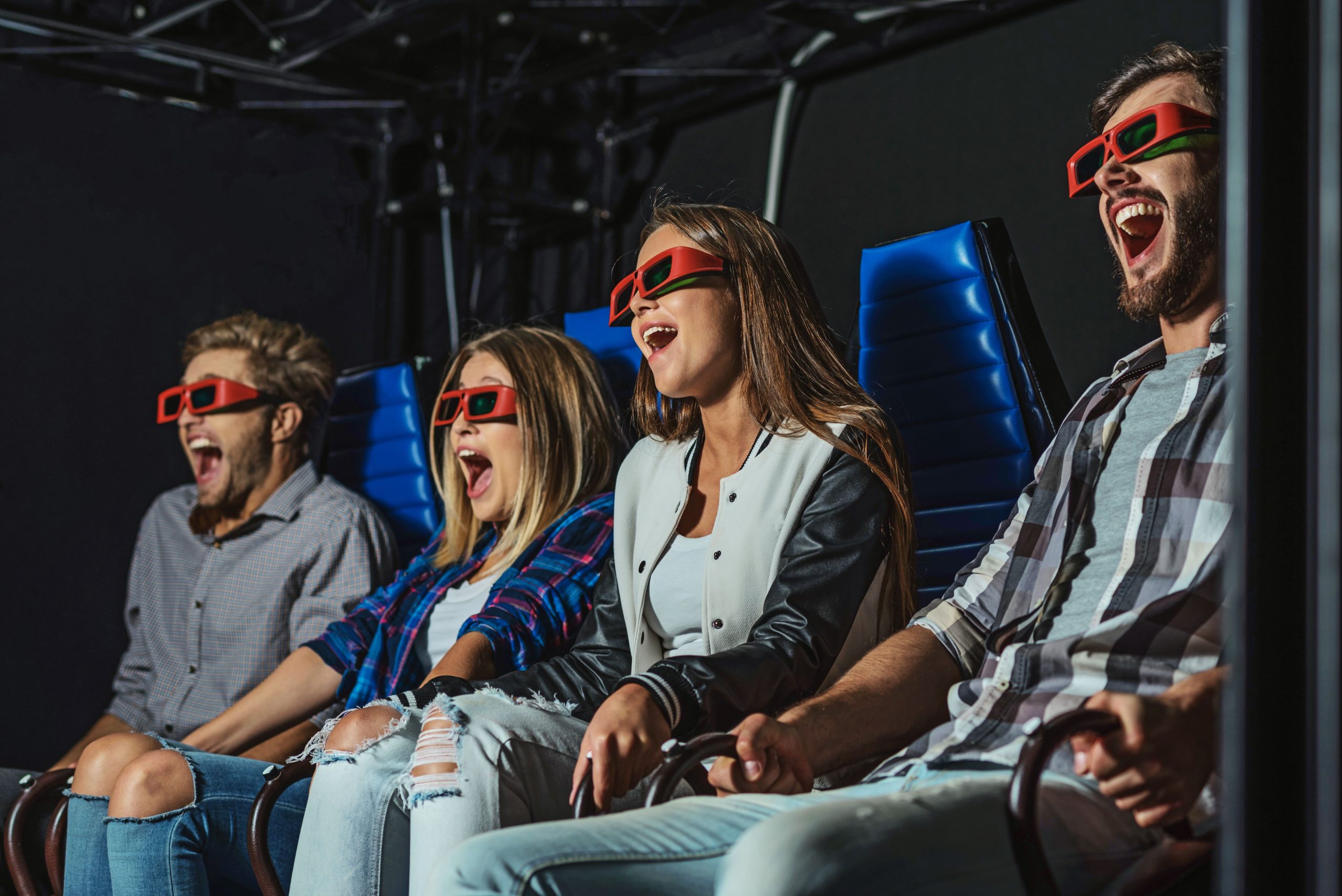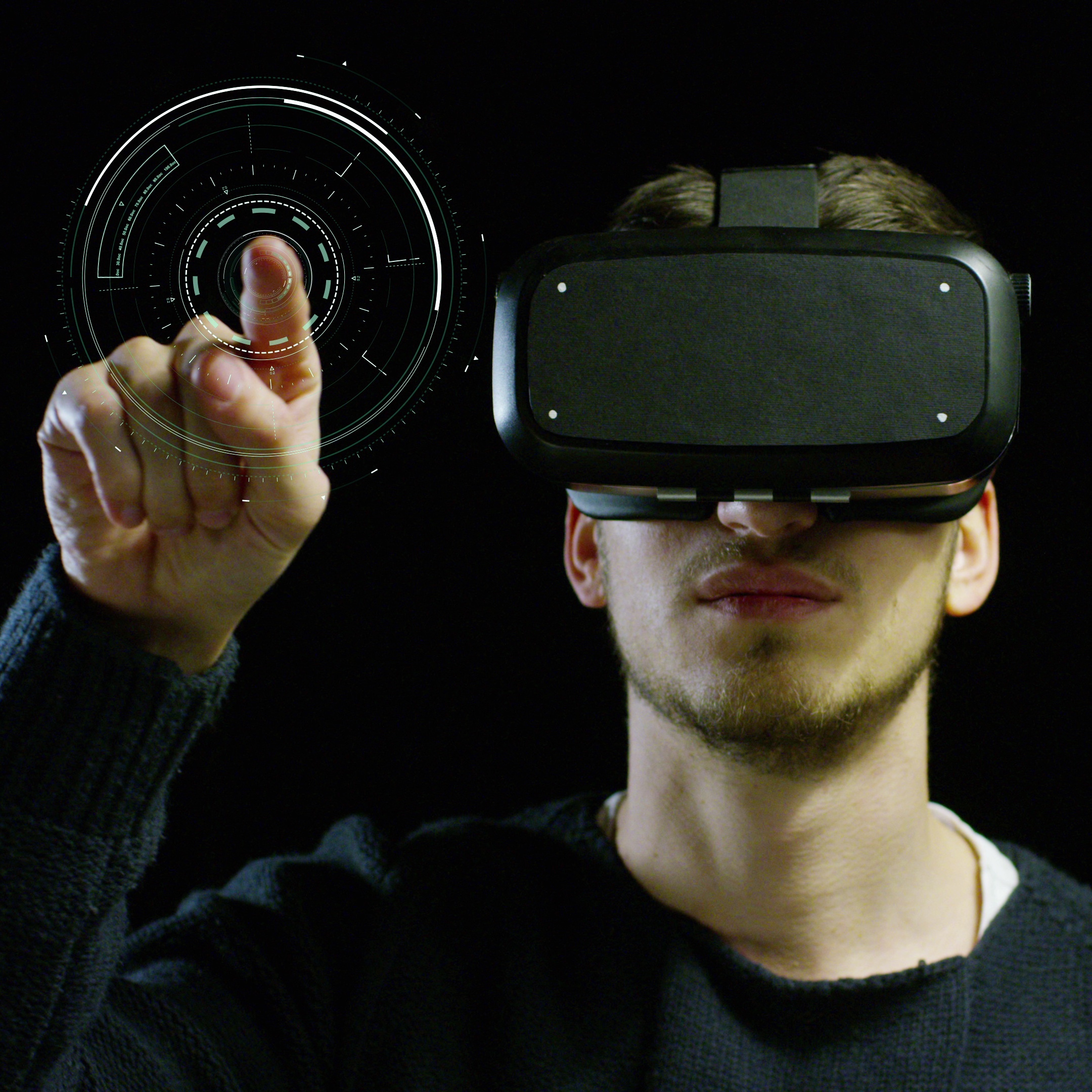VR is just the beginning—Multisensory experiences are the next step
VR has already revolutionized how you engage your customers: Today, immersive experiences allow marketers to make a more compelling case for their products. However, the current VR landscape, predominantly focused on visual and auditory stimuli, is just the beginning. As technology evolves, an exciting new frontier is emerging multisensory virtual reality. This next phase promises to engage all senses, creating experiences that are not only seen and heard but also felt, smelled, and even tasted.
Imagine the impact of a campaign that doesn’t just show your product but let’s your customers feel its texture, smell its aroma, and even taste its flavor. Multisensory experiences in VR are poised to redefine immersive marketing. Picture this: a virtual tour of a wine company’s vineyard where customers can feel the breeze, hear the rustling leaves, and smell the rich, earthy scent of grapes. This level of immersion can transform your marketing strategy, creating unforgettable experiences that drive deeper customer engagement and brand loyalty.
As the world embraces multisensory experiences as the next level in VR, so do the opportunities for innovative marketing.
We’re already starting to see bits and pieces of multisensory experiences creep into various facets of entertainment and business, and it’s only a matter of time before these are combined with VR for full immersion.
Why should marketers care about multisensory experiences within VR?
According to Robert Pietrzyk, a Brand & Design Strategist at Pearfisher, a brand design agency that has worked on brands like McDonald’s, Kotex, and Colgate Hum, capturing all the senses is critical, as one sense impacts another. “My work in multisensorial brand experience design has led me to discover how interconnected sensorial stimulus really is—and how much work it takes to create an orchestrated brand experience. Many times, we’ve been surprised by how influential cross-modals are,” he says, citing examples like, “red candies taste sweeter than yellow candies with the same sugar content. Detergents with floral graphics literally smell up to 30% more intense than their blank alternatives. Soft, squishy, or textured product walls increase the duration people tend to hold a bottle in their hands.”
It’s no wonder, then, that multisensory experiences are the next level in VR-based marketing, simulation, and other business use cases.
Businesses and marketers might also find it interesting to note that brands are starting to dabble with multisensory experiences, with and without VR. For example:
Givaudan’s is improving CPG product success with its Aroma Kiosk
Givaudan, a leading Swiss manufacturer of ingredients for flavors and fragrances, developed the Aroma Kiosk, a compact, mobile touchscreen that allows consumers to choose, smell, and rate different aroma profiles. An AI algorithm then translates this data into personalized flavor preferences.
The result? Faster product development and a higher chance of a successful launch.
Dbox is helping movie theatres stay relevant despite at-home large screens with Motion Seats
D-BOX’s innovative Motion Seats synchronize over 65,000 haptic movements, vibrations, and textures perfectly with the on-screen action, bringing movies to life in a way that standard seating simply can’t match. In other words, if the camera is following Ariel, the Little Mermaid, through a shipwreck, the seats give the viewer the feeling of lunging forward, swerving when Ariel swerves, diving and ducking as she does, and rushing upwards in pursuit.
Consequently, every film becomes a multisensory experience, allowing cinemas to elevate the viewing experience and excite moviegoers in an age when people have a sufficiently cinematic experience at home with 80-inch TV screens and surround sound.
Other use cases for the Motion Seats include professional training simulators, including flight simulators, heavy vehicle training, and more. In this use case, the idea is to enable maximum learning with minimal risk of equipment damage.
FlavorFive Studio has diversified its dining experiences by adding taste to VR
In a place like NYC, it’s going to be challenging to make your mark and stand out, especially as a culinary establishment — nobody’s done an actual census, but the number going around is 23,000+ eateries! FlavorFive Studio in New York makes a statement with an immersive, multisensorial, experiential, multi-course meal in mixed reality. Guests don’t just wine and dine; they dive into a whimsical world designed to stimulate all their senses.
Get a glimpse at how this works in this quick video.
Gearing up for multisensory experiences with VR—what tech already exists?
Suppose multisensory VR inspires you to experience things like the three examples we just looked at, and you are wondering how to ideate similarly for your brand within the context of your product, sector, and audience. In that case, your ideal next step should be the tools available to create such experiences. In this section, we’ll look at tools that allow you to target olfactory and tactile senses.
Olfactory immersion
You cannot talk about smells and scents and what they’re capable of when you’re talking about next-level VR: The aroma of a specific spice or gravy that reminds you of home. The smell of a crayon box brings a childhood memory flooding back. A perfume that makes you feel close to a loved one. All of these experiences point to the fact that smell triggers memories. And strong emotions. Studies have found that smells influence about 75% of the average person’s everyday moods and even help create (and recall) memories.
So, what tools are available for you to recreate scents for your target audience?
Smell Engine
Application: Game development
Created by researchers at Arizona State University, the Smell Engine can localize odors using a nose mask small enough to be compatible with VR headsets. The primary target audience for the device at present appears to be gaming companies, as it has been designed to integrate seamlessly with the Unity game development engine. Developers can use a “smell composer” tool to program what a user should smell when near a virtual object within the gaming environment. The system dynamically estimates and adjusts the odor mix and its strength to match the gaming environment, taking the in-game VR to the next level.
OVR
Application: Simulation and training
A company called OVR Technology is developing an advanced smell system that uses chemical reproductions to replicate smells like diesel and smoke, for example, adding a layer of authenticity to virtual training environments.
Feelreal
Application: Any VR environment
Feelreal’s sensory masks have the capability to emit a variety of scents that correspond to and are compatible with all major VR headsets. The masks come coupled with specialized software and can even simulate temperature changes, allowing you to create realistically mimic outdoor environments or specific weather conditions.
There’s more to this next-level VR technology. Feelreal can also generate a fine water mist, which can simulate experiences like rain or ocean spray. This tactile component further immerses users in the virtual world. There’s also vibration feedback through motors in the mask, which provides tactile sensations that make interactions within the VR environment feel more tangible and realistic.
These multisensory experiential capabilities open up numerous applications for Feelreal’s technology. In gaming, it can add significant depth to gameplay by making virtual environments more immersive and engaging. In training and simulation, particularly for fields such as the military, medical, and emergency response, the added sensory inputs can provide a more realistic and effective training experience. Additionally, in therapy and wellness, Feelreal’s masks can enhance therapeutic environments, aiding in relaxation or virtual meditation through enriched sensory experiences.
Watch this amazing piece of tech in action here.
Scentee
Application: App-based VR experiences
Japanese startup Scentee is working on what they claim to be the world’s first smartphone gadget capable of producing smell sensations. The Scentee team is developing an app that can integrate with various smartphone functions to add a new dimension to digital interactions.
For instance, imagine waking up to your morning alarm not just with sound but also with the refreshing smell of freshly brewed coffee. Or consider receiving a text message from a friend, each message infused with a distinct aroma that makes the interaction more personal and engaging. This integration of scents into everyday smartphone functions could reinvent how we perceive and interact with digital content.
One of the main challenges is the delivery method, which currently involves a rather invasive tube-into-nostril technique to allow electrodes to make contact with neurons deep in the nasal passages. However, researchers are actively seeking less intrusive solutions.
Any of the above olfactory sense management tools can be integrated into your VR experience to add another sensory dimension and, therefore, elevate its immersiveness and take your VR to the next level.
Tactile Immersion
Tactile sensation is almost the final frontier in making what’s only virtual feel completely real. Wearables like haptic gloves, vests, and full-body suits can already make this sort of multisensorial VR experience happen!
Here’s how:
bHaptics TactSuit
The TactSuit is your Ready-Player-One-esque full-body haptic suit that integrates seamlessly with VR platforms. It features 16 feedback points, providing detailed haptic feedback that allows users to really feel the virtual world in vivid tactile detail.
BHaptics also sells haptic vests, gloves, and arm sleeves, enabling users to choose tools depending on which areas of tactile sensation are most relevant to the product, solution, or experience they are looking to showcase.
The suit, vest, gloves, and arm sleeves combined give the wearer 40 feedback points, enabling an almost full-body multisensorial VR experience.
Omnidirectional Treadmills
Omnidirectional treadmills are creating ripples in VR locomotion by allowing users to walk in any direction within a virtual environment. These treadmills track real-world movements and translate them into VR, providing a more immersive experience. This technology has significant applications in gaming, military training, medical rehabilitation, and more. For a deeper dive into VR locomotion and the latest advancements, check out our blog on VR locomotion.
Disney’s Holo Tile Floor
In January 2024, Disney took the omnidirectional treadmill a notch higher when it launched the Holo Tile Floor, which you could describe as a multi-person, omnidirectional treadmill. The floor of the treadmill comprises countless dime-sized tiles that move not just horizontally but also to recreate other movements, like waves.
Interhaptics Engine
The Holo Tile Floor complements another of Disney’s next-level VR developments from 2013, a screen that could recreate textures using electronic pulses, allowing users to feel the texture of objects displayed on the screen. More recently, a company called Interhaptics is marketing tech that can reproduce a wide range of textures and sensations, including stiffness, vibration, and temperature, enhancing the tactile feedback in VR environments.
… but, what about taste?
Now that we are calling these experiences multisensorial, it makes sense to wonder whether there might be experiences engaging the sense of taste. The idea might sound like something out of a science fiction movie, but researchers are making progress in this next level of VR in real life.
First off, direct brain stimulation through implants like Neuralink or BrainGate could one day let you taste anything in VR. Imagine a brain chip that makes you feel the flavor of a virtual cupcake or a spicy taco just by thinking about it. Yes, it sounds a little like The Matrix, but it’s a real possibility with the right breakthroughs. However, given the complexity and risks, it isn’t easy to put a date on when this will be available.
Researchers are also using electrical currents to trick the user’s taste buds. By placing electrodes on the tongue, the user can experience basic tastes like sour, salty, and even a hint of sweet through thermal stimulation. This tech is still rudimentary and requires some bulky gear, but it’s a step towards adding taste to digital experiences.
To make it practical, researchers plan to embed this tech into everyday objects. Picture electrode-embedded chopsticks making mashed potatoes taste saltier or a special bowl enhancing the sourness of a soup. These innovations could help people cut down on salt or sugar in their diets and bring back the joy of eating for those with diminished taste capabilities, like chemotherapy patients.
Watch this video to see how researchers are working to build taste-based sensation into VR experiences.
Conclusion: Ready to level up your VR tactics?
Multisensory experiences are set to be the next big leap in VR, lending marketers an unmatched tool to engage and captivate their audience deeply. VR has already taken customer engagement a notch higher with immersive visual and auditory experiences but wielding its true potential means engaging all five senses. Imagine the connection and loyalty you could build when customers can feel, smell, and even taste your products in a virtual setting.
Investing in multisensory experiential VR isn’t just about staying ahead of the curve—it’s about transforming how you interact with your audience. Think about it: the subtle scent of a new perfume, the luxurious feel of high-quality fabric, or the refreshing taste of a beverage. Multisensory VR can create immersive experiences that traditional marketing can’t match.
The possibilities are endless. From enhancing product demos and virtual tours to creating memorable brand experiences that drive deeper engagement and loyalty, multisensory VR can strengthen your marketing strategy, making your brand stand out.
Curious about how to add this to your VR strategy? Magineu is here to help you navigate this exciting frontier. Contact us to learn more and take your VR marketing to the next level. Let’s create something extraordinary together.



